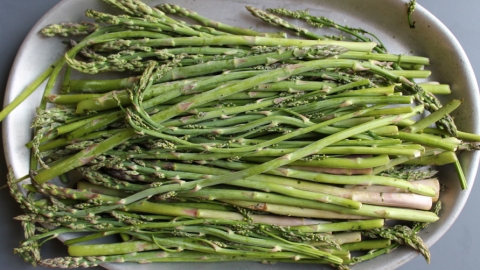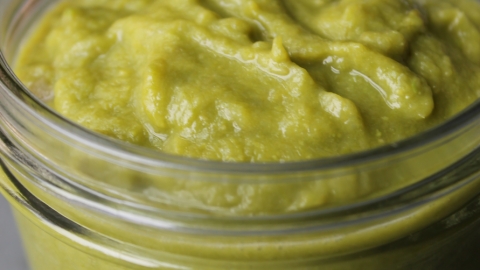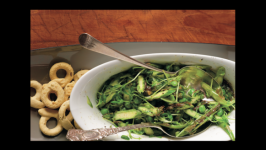Ingredients
- 1 pound asparagus trimmings, cut into 2-inch pieces
Preparation
MAKES 2 PINTS
Place the asparagus in a deep pot and cover with about 1 inch of water. Bring to a boil over medium heat, cover, and gently boil until the asparagus are very, very soft, about 45 minutes or longer. Add more water to be sure the asparagus stems stayed covered if necessary.
Let cool in the water.
Grind the asparagus in a food processor with a little of the cooking water. (You may not be able to grind up the woodiest parts. It’s okay.) Pass the ground asparagus plus the rest of the cooking water through a food mill. You will get about 1 quart of stock, mostly green water with about one-third the volume in pulp.
To store stock in the refrigerator, have ready the appropriate size jars. I like to use 1 quart jar, mainly to save space. Sterilize the jar, band, and lid. (To sterilize, boil the jar, band and lid for 10 minutes at sea level, adding 1 minute for every 1,000 feet above sea level.) Pour the stock into the jar; wipe the rims, place on the lid, and screw on the band. You can store the stock in the refrigerator indefinitely, as long as you sterilize the stock every fourth day or so (you don’t need to re-sterilize the jar). The stock will reduce in volume every time you do this.
To store stock in the freezer, be sure to use freezer safe jars or plastic containers. You don’t have to sterilize the jars but they need to be very clean. Pour the stock into the jars leaving 2 inches of headroom. You can freeze asparagus stock for about a year, after which the flavor may begin to degenerate.
For shelf-stable stock, you can pressure can it. Have ready 2 clean pint jars and bands, and new lids that have been simmered in hot water to soften the rubberized flange. Pour the stock into the jars leaving 1 ¼ inches of headroom. Wipe the rims, place on the lids, and screw on the bands fingertip tight. Process the jars in a pressure canner at 10 psi for weighted gauge canners and 11 psi for dial gauge canners for 30 minutes. Be sure to make altitude adjustments: For weighted gauge pressure canners increase the pressure to 15 pounds between 1,000 and 10,000 feet. For dial gauge pressure canners add 1/2 pound of pressure for every 1,000 feet above 2,000 feet altitude. You don’t need to change the processing time. Process according to the directions on your particular canner.
You may notice some separation of the pulp and water in the jar. It’s okay. Store in a cool dark place. Season the stock as needed and refrigerate after opening.
All recipes are from The Kitchen Ecosystem by Eugenia Bone (Clarkson Potter, 2014)







